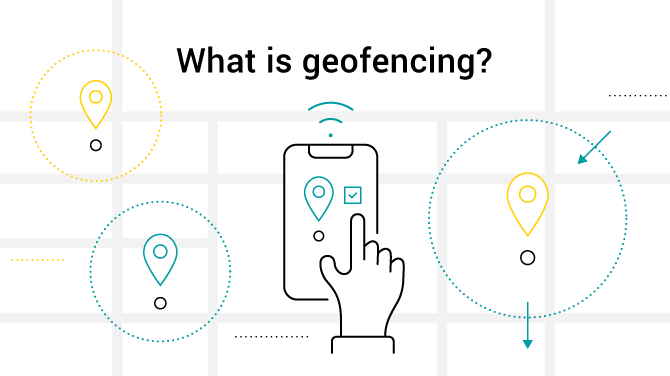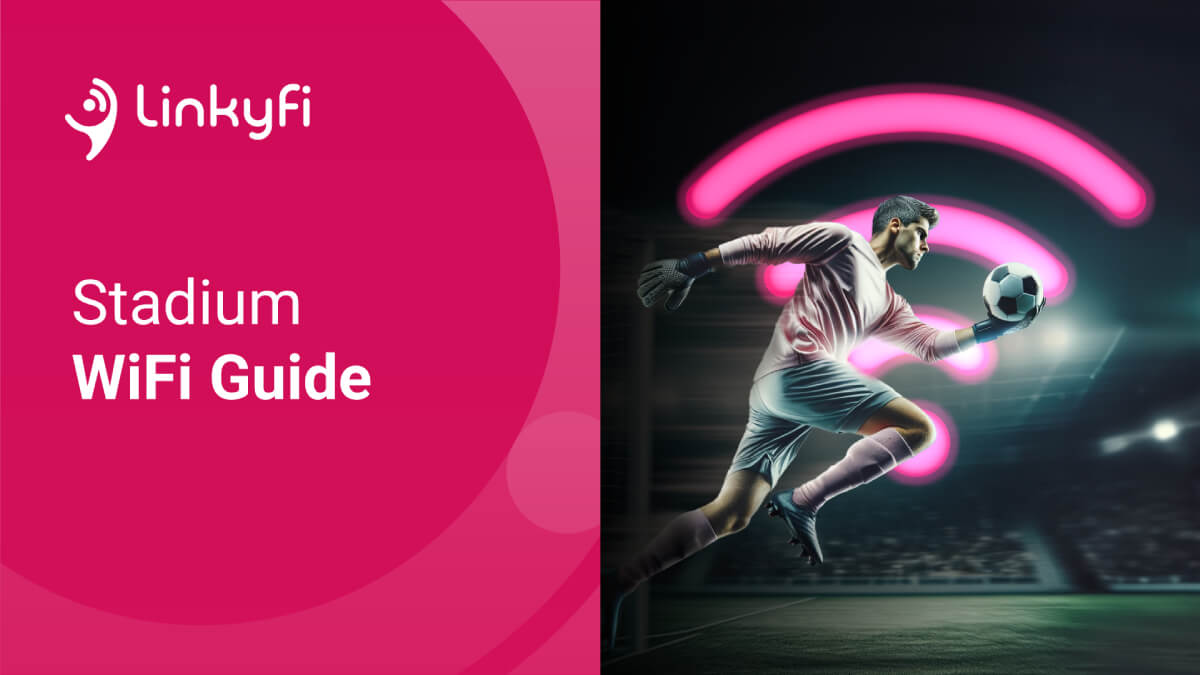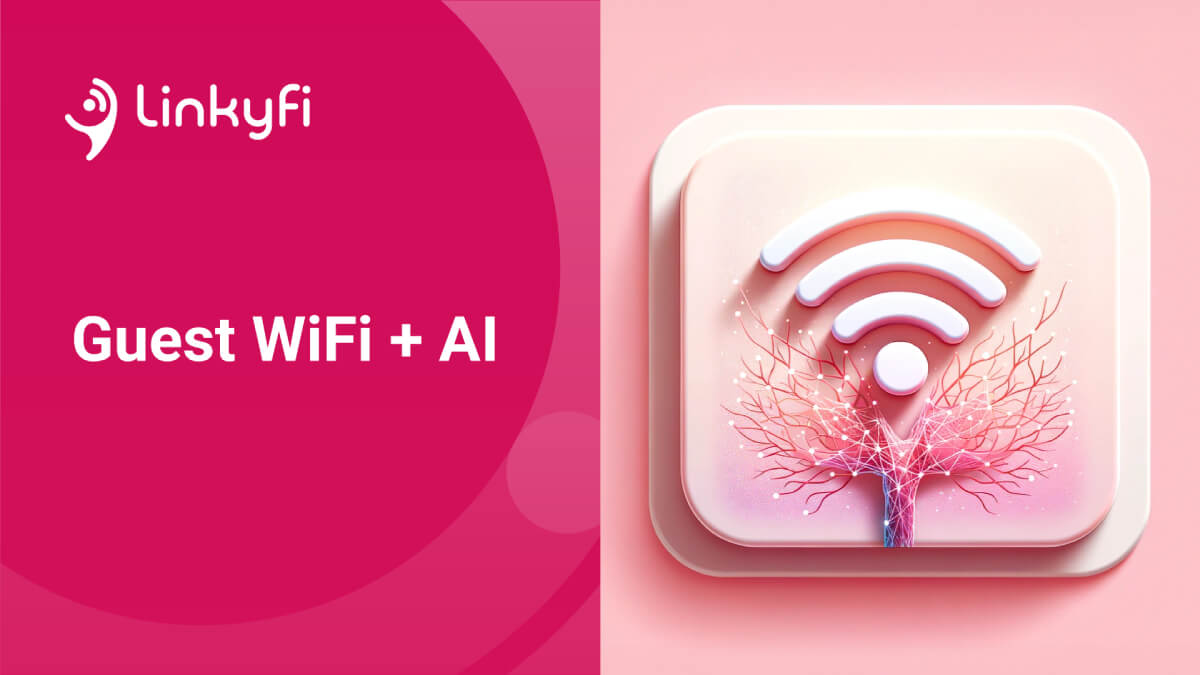What is WiFi geofencing and how can it be used in different venues?

WiFi geofencing offers multiple benefits. Venues have the opportunity to gather crucial information about how visitors experience their sites, and the chance to use this data to improve operational efficiency.
When creating your geofence, you must consider your location, what hardware you’ll use to create your perimeter and what exactly your geofence will be used for. In this blog post, we’ll explore what WiFi geofencing is, how it works and share use cases.
What is WiFi Geofencing?
A geofence is a virtual fence created within a certain location. This could be a store, a mall or a conference hall. The geofence serves as a zone where devices are able to access information while within the boundaries of the fence. One of the more popular applications for WiFi geofencing is in shopping malls, where shoppers are able to access WiFi and also receive marketing offers for retail outlets.
How Does WiFi Geofencing Work?
Geofencing is a location-based technology. Geofences are based on predetermined coordinates within software. When a user enters the vicinity of a geofence, the option to opt-in and use an app or access free WiFi becomes available. When a user accesses free WiFi, the software (with geofencing capabilities) provides the opportunity to make use of or access services within the geofence.

Geofences are used to offer a range of services. The most popular are related to marketing. As visitors enter a location, retailers can send a push notification to their smartphones. The notification, in the form of an SMS, typically includes a link to download an app or to a website designed for the location. Once the user accesses the app or website, they can begin to receive deals, discounts and special offers.
Geofences can be as large as required. The coverage and accuracy of a geofence are determined by the types of devices you use to create the geofence. Two common types of devices used are Bluetooth beacons and WiFi routers.
Bluetooth Devices, and Geofencing
When designing your geofence environment, there are considerations to make. While budget is always a factor, the choice of using beacons versus WiFi is not as obvious.
Here’s a look at both:
Like Wi-Fi, your Bluetooth-enabled devices can communicate with each other. It is, however, not capable of transferring large amounts of data.
When used for geofencing purposes, beacons are placed strategically throughout a site. As Bluetooth is only capable of transferring small amounts of data, beacons require less power and use batteries. Standard beacons have a range of up to 80m while long-range beacons can reach 300m.
WiFi technology is more common than beacons. It’s more widely used in venues as a means of communication. As more venues aim to create more attractive experiences that keep visitors on-site for longer, access to free WiFi has become a staple. It’s also perfect for geofencing projects.
Here are three reasons most venues opt for WiFi over beacons:
Less Expensive Solution for WiFi Geofencing
WiFi routers are often chosen because they offer more functionality than Bluetooth beacons. WiFi offers internet access to visitors and can also be used to transmit push messaging to venue guests. Bluetooth beacons don’t offer internet access, making them less versatile.
Typically, when presented with the option of adding beacons to an already established WiFi-enabled network, venues choose not to. There simply isn’t a need to incur the expense.
Easier to Maintain
While beacons require less energy to function, they rely on batteries that must be replaced. This means that site managers must account for maintenance of beacons according to their battery life.
WiFi routers, on the other hand, are powered by electricity. This means they require less physical maintenance and most include easy-to-use admin portals for configurations.
Greater Coverage
WiFi signal strength can reach as far as 500m whereas most beacons have a range of 80m to 300m. This means that WiFi also makes for a more affordable solution in the long run. The cost of batteries and purchasing more beacon units can add up over time, in comparison to fewer WiFi routers strategically placed within a venue.

Use Cases for WiFi Geofencing
Geofencing is versatile. It can be applied in various environments to offer guests and site managers insight on venue traffic and control over assets and their environments.
Here are five applications of WiFi geofencing:

Childcare in a busy environment can be overwhelming. Geofencing can be used as a measure to keep tabs on where children are at all times. Using a perimeter, parents can be notified when their child leaves a zone.
Today, this kind of technology can be applied with the use of smartphone apps. As a child leaves a demarcated zone, a notification is sent to a parent immediately.

Locationized firearms are weapons that can be controlled within the range of a geofence. When firearm carriers enter the demarcated zone, electronic devices attached to the weapons disable the weapons.
While this application could prove highly effective at preventing deaths, it has not been commercialised.

Telematics bears a similar application to the use of zones for childcare service. The only difference is that it applies to assets. By creating a perimeter at a site or certain zones in a building or campus, companies are able to track assets. Should an asset leave a designated zone, a trigger is sent to the asset/site manager to take action.

One of the more fascinating applications of WiFi geofencing technology applies to wide area networks. Data security is essential today, especially with the growth of BYOD culture and the number of new and unmanaged devices that can make their way on-site.
By using a protected zone, companies can prevent certain functionality of user devices. This includes the ability to use smartphone cameras in certain areas or provide notifications to security when a visitor enters a restricted area.

Marketing is by far one of the most popular applications of geofencing technology. Through the use of push notifications, brands are able to engage guests with messaging designed to motivate brand engagements and drive specific consumer behaviour.
WiFi geofencing can also prove a more affordable alternative to above-the-line, below-the-line, and online marketing initiatives. When visitors enter a zone, they can opt-in for various offers, consenting to engagement with brands. This means brands are able to spend less of their marketing budget on acquiring leads over time.
Companies are also able to run more targeted marketing campaigns as they develop more insights into guest behaviour. Campaigns can offer products and services that are better aligned with their market, as well as develop stronger relationships with their clients.
Conclusion
WiFi geofencing is a highly effective technology. When coupled with WiFi, it can enable indoor wayfinding for venue visitors, and provide venues with helpful insights on how visitors experience their locations. WiFi geofencing is also versatile and can be used to create safer environments and offer brands the opportunity to market visitors within range.
Recommended posts
- WiFi for Stadiums Explained
- Guest WiFi - Easter Marketing with AI: A Step-by-Step Guide
- Guest WiFi + AI: Your Marketing Dream Team!
Subscribe to stay in the loop with all our latest content:
Recommended posts




